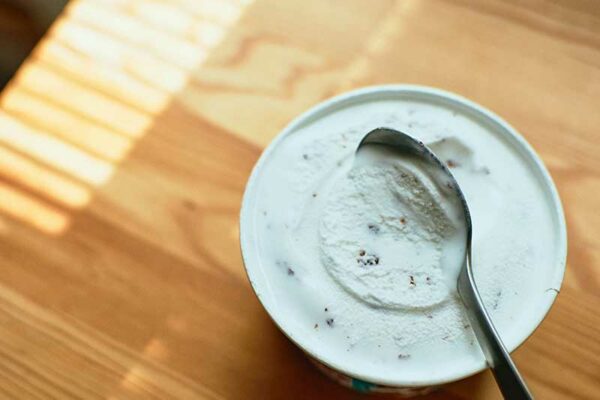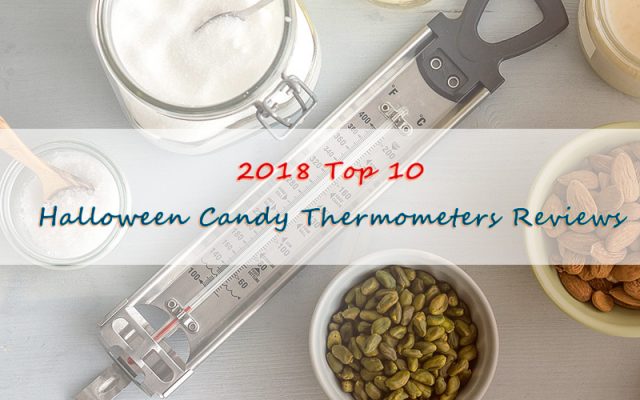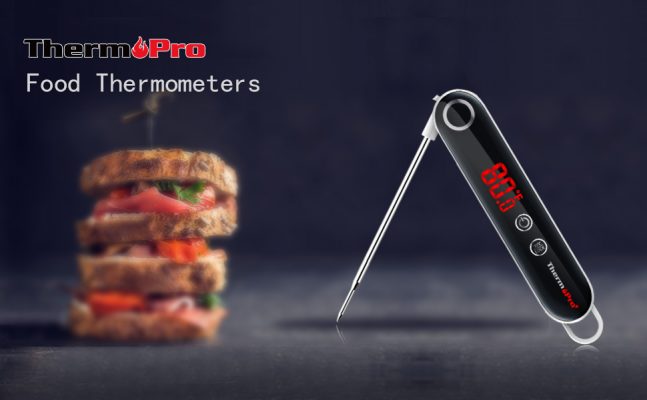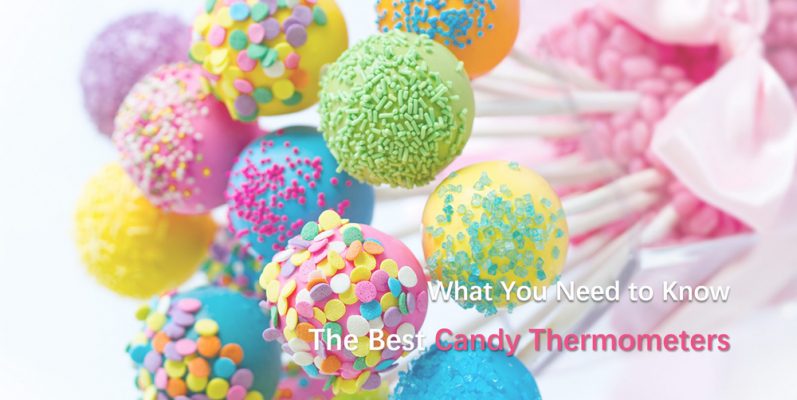The customer service team is always listening, taking notes, and quantifying complaints to ensure our products are continually improved. Due to selling directly to you, the customer, via Amazon, we can use product reviews to help us improve our existing products or help further development of new products.
Table of Contents
Making hard-crack stage candy requires a precise measurement of water temperature. Here’s how using a digital thermometer can be a quick and easy way to get the hard ball stage candy temperature.
To make candy, sugar is boiled in water. The temperature at which it boils determines the kind of candy produced. As the water temperature increases, the sugar goes through a sequence of syrup stages: thread, soft ball, firm ball, hard ball, soft crack, and, finally, hard crack.
It is essential to measure the temperature of the water exactly using a candy thermometer and then to consult a candy temperature chart in order to produce the kind of candy desired.
What is Hard-Crack Stage in Candy Making?
When the water temperature is between 300- and 310-degrees Fahrenheit, the sugar reaches its highest concentration, at 99%, and is in the hard-crack stage. This is the highest stage most candy recipes call for; exceeding it will result in caramelization, rather than melting, of the sugar (going over 350-degrees Fahrenheit will burn the sugar).
At the hard-crack stage, almost all of the water has boiled off the sugar, resulting in a thick syrup. When this syrup is dropped into a bowl of very cold water, it will instantly cool and harden into thin, brittle threads. These threads will crack and shatter when they are bent.
The hard-crack stage is used to make hard candies such as nut brittles, lollipops, candy canes, glass candy, rock candy, and toffees.

Soft-Crack VS Hard-Crack Stage
The soft-crack stage of candy making can be difficult to distinguish from the hard-crack stage without a sufficiently precise thermometer. The two are distinct, however, and will produce candies with very different textures and structures. It is important, therefore, to know the difference between the soft-crack and hard-crack stages and what each will produce.
At the soft-crack stage, the water temperature will be between 270- and 290-degree Fahrenheit. The sugar concentration in the syrup will be around 95%. It is possible to estimate when the syrup enters the soft-crack stage because the bubbles produced by the boiling-off of the moisture will become small, thick, and clustered together.
Dropping some of the syrup into a bowl of cold water will result in fine threads that are flexible, rather than brittle, and that bend slightly before breaking. This slight flexibility is what gives soft-crack candies, such as taffy and butterscotch, their chewiness.
Candy-Making Stages Temperature Chart
Here is the following candy-making stage temperature for different sugar stages.
Thread Stage
Temperature Range: 230- to 235-degrees Fahrenheit.
Sugar Concentration: 80%
Sugar that is cooked to this stage will produce a viscous liquid syrup that does not solidify when dropped into a bowl of cold water. This liquified sugar is used for syrups, candied fruits, and other candy dips.
Soft Ball Stage
Temperature Range: 235- to 240-degrees Fahrenheit
Sugar Concentration: 85%
Sugar that is cooked to this stage will produce a syrup that will solidify into a soft, pliable ball when dropped into a bowl of cold water. Because of the ball formation, it is possible to estimate when the water is at the soft ball stage without thermometer use. This ball will slowly flatten out when removed from the water. This stage is used for making fudge and similar chewy, soft candies.
Firm Ball Stage
Temperature Range: 245- to 250-degree Fahrenheit
Sugar Concentration: 87%
Sugar that is cooked to this stage will produce a syrup that will solidify into a firm ball when dropped into a bowl of cold water. The ball will be malleable and can be shaped, like clay, and does not flatten out when left to stand. This stage is used for making caramels and similar firm candies.
Hard Ball Stage
Temperature Range: 250- to 265-degrees Fahrenheit
Sugar Concentration: 92%
Sugar that is cooked to this stage will form thick threads when it is dripped. Dropping these threads into a bowl of cold water will produce a hard ball that is firm but can still be flattened or shaped by hand. The hard ball stage candy temperature is appropriate for nougat, gummies, marshmallows, and similar firm candies.
Soft-Crack Stage
Temperature Range: 270- to 290-degrees Fahrenheit
Sugar Concentration: 95%
Sugar that is cooked to this stage will solidify into threads when it is dropped into a bowl of cold water. The threads will be firm, but flexible enough to bend a bit before snapping. This stage is used for making taffies, butterscotch, and other thick, chewy candies.
Hard-Crack Stage
Temperature Range: 300- to 310-degrees Fahrenheit
Sugar Concentration: 99%
Sugar this is cooked to this stage will solidify into threads when it is dropped into a bowl of cold water. The threads will be hard and brittle; if they are bent, they will snap immediately. This staged is used for making toffees, brittles, lollipops and other hard candies.
How to Use ThermoPro Candy Thermometer to Test Hard-Crack Stage
The traditional candy thermometer is a mercury-containing glass pipe housed inside a metal frame that clips to the side of the pot. The downside to these thermometers is that they can be slow to indicate the temperature, they measure the temperature in only one place in the pot, and they can lose accuracy as they age.
ThermoPro digital thermometers provide a better solution. They are precise—able to measure temperature with an accuracy of +/-0.9-degrees Fahrenheit—which is essential when it comes to getting the sugar into the water at exactly the right moment. In addition, ThermoPro digital thermometers are quick: the thermocouple sensor inside the probe provides an accurate reading within three seconds. They are easy to move around the pot, easy to clean, and easy to store without the risk of breaking.
Follow these simple steps to use a ThermoPro digital food thermometer to test for the hard-crack stage:
- Turn on the thermometer by pressing the power button.
- If you are using a foldable thermometer, extend the probe to the open position.
- Insert the tip of the thermometer approximately three to four inches into the water, taking care not to burn your hand or fingers.
- Give the probe a quick stir.
- Let the reading stabilize for a few seconds to determine the temperature of the water.
- Remove the probe, wipe it off, and, if you are using a foldable thermometer, close the probe.
Remember to calibrate your thermometer periodically by testing it in a pot of boiling water. Because water boils at 212-degrees Fahrenheit (at sea level), the thermometer should read 212-degrees. If it does not, follow the manufacturer’s instructions for recalibration.
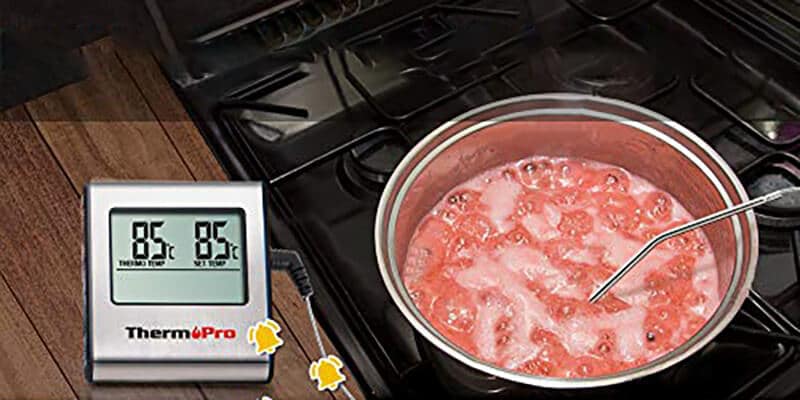
Bonus Tips: Tips for Candy Making Success
- Be prepared. Carefully read your recipe in advance. Have your tools close at hand and all of your ingredients measured out precisely in an easy to access place. To speed the process up, consider having two pans of water ready, rather than one, and make sure you have a surface on which you can cool the candy.
- Consider portion size. If the recipe you are following is written for a particular portion size or number of pieces that differ from your needs, take the time to calculate in advance how you will need to change the ingredient quantities.
- Use quality ingredients. Very few ingredients are required to make candy. Do not skim on their quality, however. Use clean, filtered water, the best grade of sugar, and only the finest candy-designated ingredients.
- Take care. Pay attention to what you are doing when you are working around a stovetop and with boiling or hot water. Be especially careful when removing cooked sugar from hot water—whether in ball or thread form—and let it cool sufficiently before handling it and shaping it. Children can help with preparing molds and measuring ingredients, but they should not cook or pour the syrup.
- Experiment with flavors. Flavoring, in the form of oils or powders, can be added to the syrup to satisfy a wide range of tastes; these include both standard varieties (mint, cherry, cinnamon, and so forth) and more innovative variations and combinations. Some candies can be improved with sour or tart flavors as well.
- Plan your presentation. Candy should not just taste good: it should be a treat for the eye as well. Think about how you will present your creation. Consider wraps, bags, twists, ties, ribbons, boxes, tins, jars, or another decorative packaging.
- Store your candy. Hard candy should be stored at room temperature in a dry place, and it should last for several weeks. Never keep dry candy in the refrigerator or freezer.
Making candy can be a challenging process. It takes practice and the right tools to get it just right, but when you do, nothing tastes better. Using quality equipment, such as a ThermoPro digital thermometer, will help ensure that your candy-making efforts pay off sweetly.

